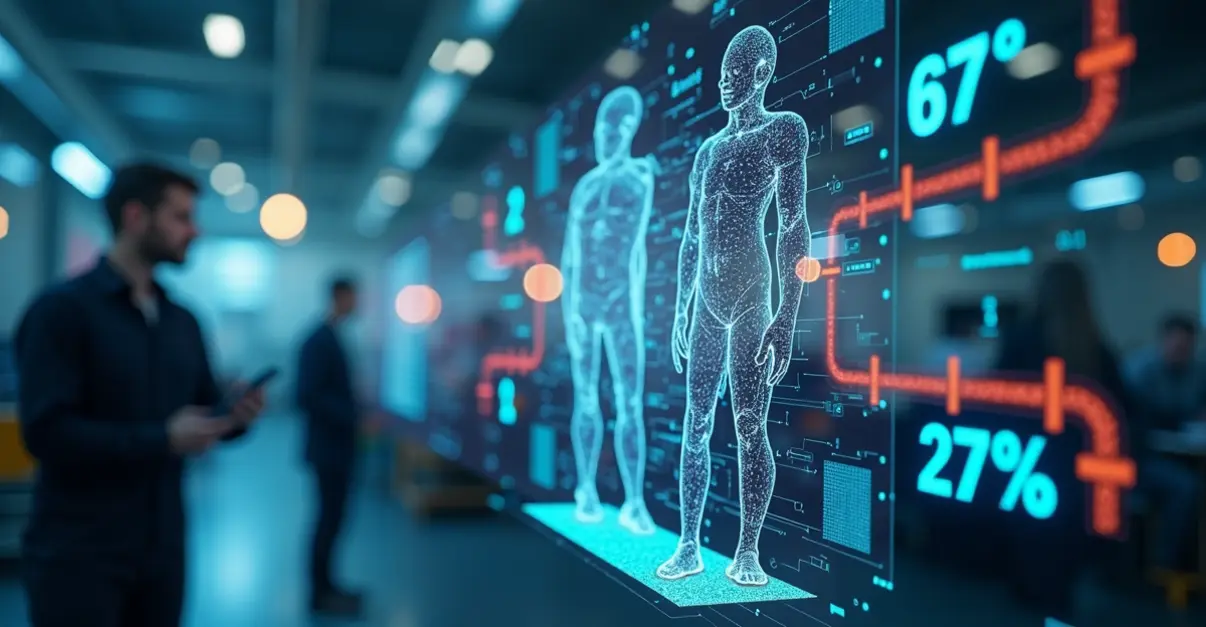Digital twin technology creates real-time virtual factory replicas that enable predictive maintenance, reduce downtime by 67%, cut waste from 8% to 3%, and accelerate production cycles by 30% through simulation and optimization.

The Rise of Digital Twins in Modern Manufacturing
Digital twin technology is transforming industrial operations by creating virtual replicas of physical factories that operate in real-time synchronization with their physical counterparts. These sophisticated digital models enable manufacturers to simulate, monitor, and optimize their entire production processes before implementing changes in the physical world.
How Digital Twins Work in Factory Environments
A digital twin is essentially a living digital model that continuously updates itself with real-time data from IoT sensors, production equipment, and operational systems. 'The beauty of digital twins lies in their ability to predict failures and opportunities for improvement before they occur in the physical factory,' explains Dr. Maria Rodriguez, a manufacturing technology expert at Siemens. 'We're seeing factories reduce unplanned downtime by up to 67% through predictive maintenance enabled by digital twin simulations.'
The technology operates through three main components: the physical factory environment, the digital representation, and the communication channel connecting them. This digital thread enables bidirectional information flow, allowing manufacturers to test scenarios, optimize processes, and make data-driven decisions without disrupting actual production.
Real-World Benefits and Case Studies
Recent implementations across various industries demonstrate remarkable results. According to a 2025 case study, factories using digital twins achieve up to 30% faster production cycles and reduce material waste from 8% to 3%. The technology has proven particularly valuable for predictive maintenance, with companies reporting 40% reductions in maintenance costs.
'Our digital twin implementation has transformed how we approach factory optimization,' says John Chen, operations director at a major automotive manufacturer. 'We can now simulate production line changes in the virtual environment and implement them with confidence, knowing exactly how they'll impact our operations.'
Leading Solutions and Implementation Approaches
Major technology providers have developed comprehensive digital twin platforms. Siemens' Xcelerator portfolio with Teamcenter and MindSphere offers comprehensive factory virtualization, while Dassault Systèmes' 3DEXPERIENCE platform enables value chain simulation. GE's Predix provides industrial-scale asset management, and Microsoft's Azure Digital Twins delivers cloud-based enterprise solutions.
The "Twin Reality" concept represents the next frontier, combining digital twins with AI simulations to optimize both capital and operational expenditures. Accenture's collaboration with NVIDIA using the Omniverse platform demonstrates how manufacturers can streamline equipment design and testing while mitigating program risks.
Implementation Challenges and Future Outlook
Despite the clear benefits, implementing digital twins presents challenges. 'The biggest hurdles we face include implementation costs, talent shortages, and cybersecurity concerns,' notes Sarah Johnson, a digital transformation consultant. 'However, the return on investment typically justifies the initial expenditure within 12-18 months.'
According to industry projections, the global digital twin market is expected to reach $274 billion by 2025, growing at a compound annual growth rate of 22.1%. This rapid expansion reflects the technology's proven ability to drive operational excellence across manufacturing sectors.
As factories continue to embrace Industry 4.0 technologies, digital twins are becoming essential tools for creating intelligent, self-optimizing manufacturing ecosystems. The ability to simulate operations in real-time not only improves efficiency but also enables manufacturers to adapt quickly to market changes and supply chain disruptions.

 Nederlands
Nederlands
 English
English
 Deutsch
Deutsch
 Français
Français
 Español
Español
 Português
Português









